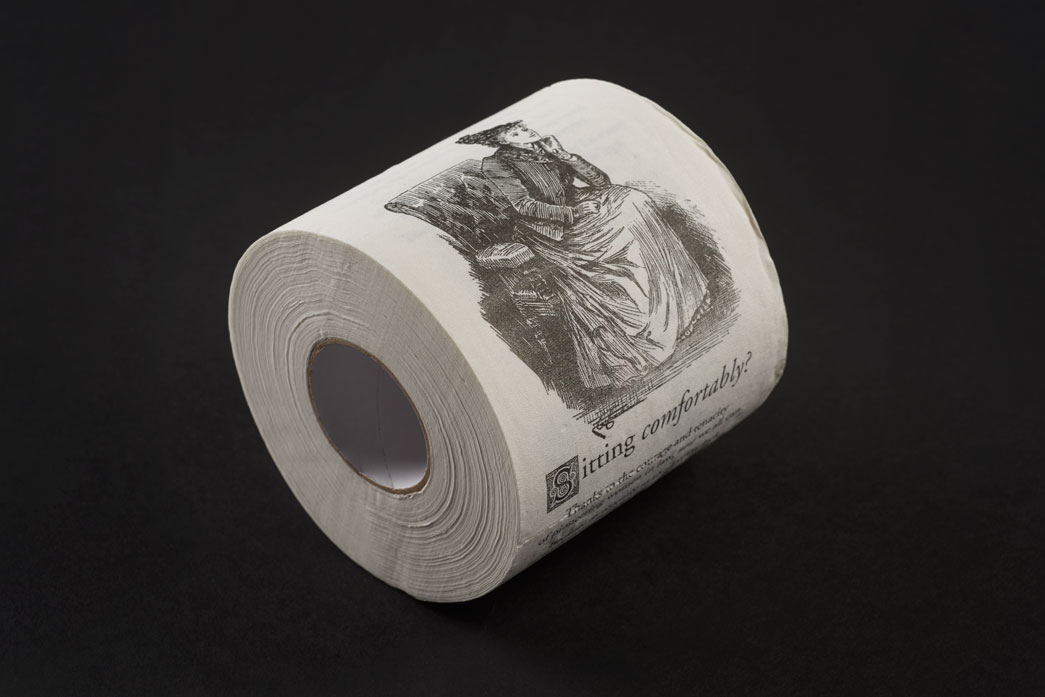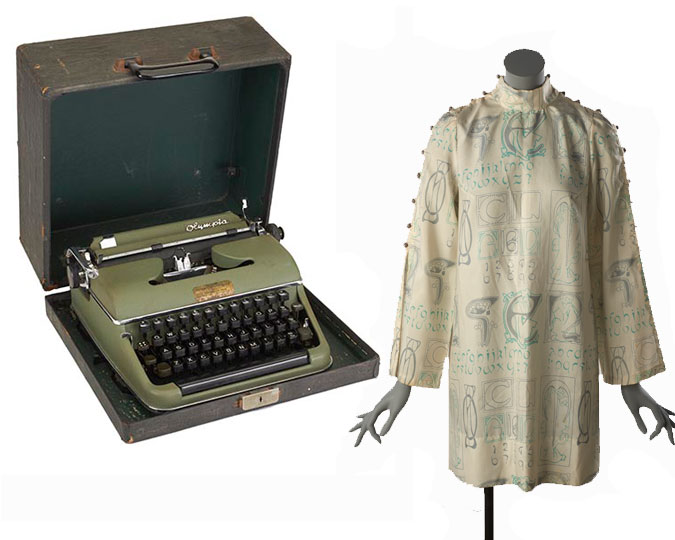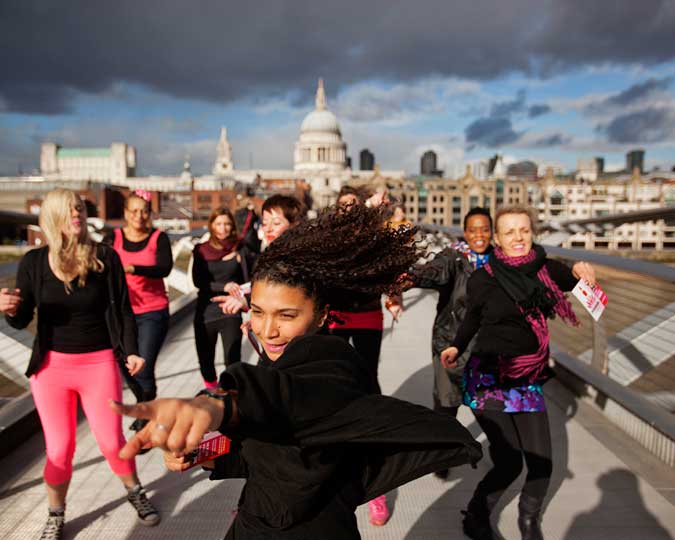How a roll of commemorative toilet paper tells a hidden story about women's rights, from workplace discrimination to just being able to leave the house.
A part of the Museum of London's collection of social history objects is this roll of toilet paper, printed with a seated women in late-Victorian costume and the legend "Sitting comfortably? Thanks to the courage and tenacity of pioneering women in law, now we all can."
The toilet roll was created by the First 100 Years project, a campaign to celebrate the history of women in the legal profession since 1919, when the Sex Disqualification (Removal) Act made it illegal to ban people from jobs based on their sex. However, many businesses used excuses to avoid hiring women, notably that they couldn't adapt their workplaces to accommodate them.
The founder of The First 100 Years, Dana Denis-Smith, said: “As we collected stories of women in the legal profession, one story came up repeatedly - and it stood out: the lack of sanitary facilities for women as a reason to reject them when applying for jobs in law firms. The artefact is a visual representation that we felt empowers women to share their own experience in a dignified but striking way. It represents the collective voice of those that faced such a ridiculous obstacle."
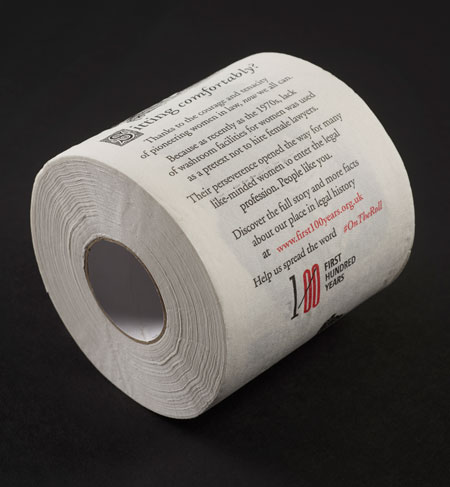
This was part of a broader pattern through the 19th and 20th centuries of inadequate female facilities. 'Respectable' women couldn't relieve themselves in 'retired streets' or alleys as men did, and the few toilets available in Victorian London were overwhelmingly built for men. Women who wished to travel into central London or even further for leisure and pleasure had to carefully plan where they could ‘stop off’, en route to their destination. Thus excursions outside the house were often based on visiting friends and family, where toilet facilities could be guaranteed.
Lack of access to toilets effectively tied women to their homes, putting them on a leash as long as their bladder capacity. Even when London's first public toilets were built for the 1851 Great Exhibition, the prevailing modesty of Victorian society assumed women would be too embarrassed to be seen entering them.
This was part of a broader Victorian pattern of dividing the city into a male-oriented 'public' sphere and a female-oriented 'private' one. Victorian society saw the ideal woman as being 'the angel of the house', naturally focused on being a good wife, mother, sister and daughter. From the mid-19th century, workplaces, railway carriages, even banks were often gender-segregated. Smaller, more cosily-decorated spaces were cordoned off for ladies to protect the 'weaker sex' from contact with the masculine world of business and public pleasure.
This silent discrimination still continues in many countries around the world. As recently as 2012, female demonstrators in India marked International Women's Day by storming men's public toilets in the city of Nagpur, protesting inadequate numbers of bathrooms for women.
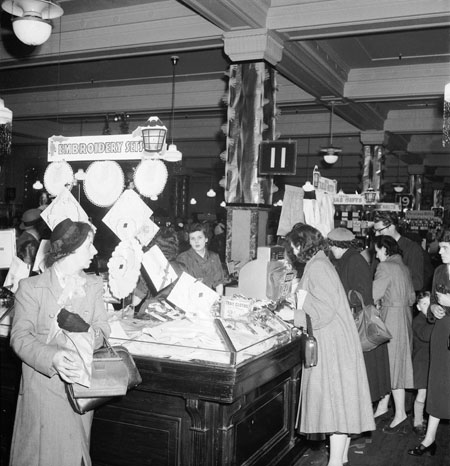
Women shop at Selfridges, 1953
Interior of Selfridges, at Christmas. ID no. HG1471/17
This unequal access to the public city began to be challenged in the 20th century. This impressive item from our collection is one example: it's the lift (not the toilet) from Selfridges department store, installed in 1928.
From Beverley Cook, our social and working history curator: "The availability of public rest rooms in stores such as Selfridges was hugely beneficial to women. It allowed them to spend more time away from the domestic space, helping to make shopping a leisurely and enjoyable activity. Previously women were very much confined to shopping locally, near their homes to avoid getting caught short. Selfridges also benefited the Suffragettes as, spending a lot of time on the streets campaigning, meant they needed such places not only to use the toilets but also have a cup of tea in a safe and respectable environment."

Land-girls at the Women's Right to Serve March, 1915
The short hairstyles and breeches worn by female land girls liberated them from restrictive Edwardian clothing. ID no. 2003_46_190
The Suffragette movement opposed another sexist division of society by campaigning for female representation in parliament, on the basis that this would improve the lives of all women.
These images come from the Women's Right to Serve march, which took place during the First World War, on 17 July 1915. This 'great procession of women' was organised by the Suffragette leader Emmeline Pankhurst at the request of Lloyd George, Minister of Munitions, to encourage women to register for 'war work'. Along the route were 50 tables where women could register to work in the place of men who were away fighting. Women served on farms, railways, in the police and fire service, and as workers in munitions factories.
There was widespread resistance to the idea of women doing large-scale war work, much of it rooted in the Victorian ideals of female domesticity: as well as the dangers of factory work, it was felt to be ‘unwomanly’ and also a threat to men’s jobs.

Keep your mind on the job, 1944
'Safety-first' poster by Grace Golden, produced in response to the growing number of women working in factories during the Second World War
By 1917, the mostly-female-staffed munitions factories produced 80% of the weapons and shells used by the British Army. Not only was the industrial machinery dangerous, but exposure to the explosive chemical TNT turned many workers' skins a sickly yellow, giving them the nickname 'canaries'. By the end of the war, over 400 women would die from TNT poisoning. Women were also paid less than men for the same work, which led to further hostility from the male-dominated labour unions: they feared that employers would try and replace their men with cheap female labour. That opposition helped to reclaim well-paid factory work for men after 1918, until the state once more needed mass female labour during the Second World War.
Once again, the presence of women was felt to bring new hazards and distractions into the previously male-dominated factory environment. Providing dedicated female facilities including wash rooms, changing rooms and toilet facilities, were regarded as a burdensome responsibility by some employers. Both wars saw strikes by women employed in war work, campaigning for equal pay to male workers, but also for better safety equipment, recognition and bathrooms. We're happy to add this toilet roll to the Museum of London collection, representing the untold story of women through history standing up for their right to sit down.








